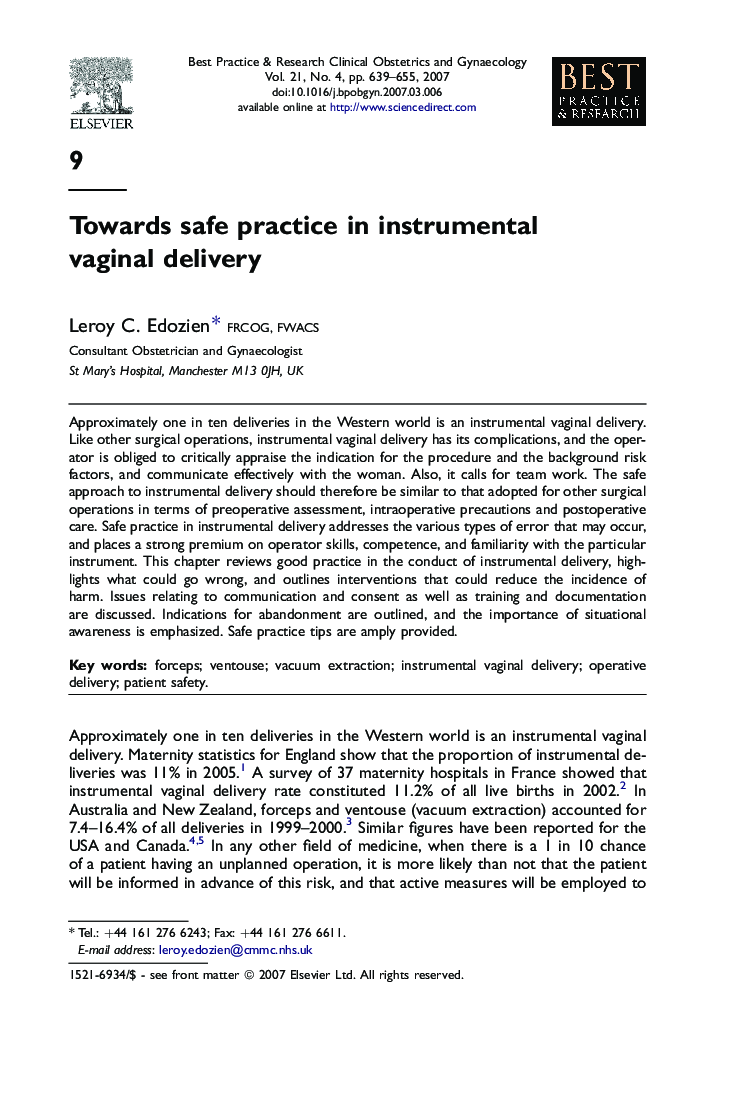| Article ID | Journal | Published Year | Pages | File Type |
|---|---|---|---|---|
| 3907662 | Best Practice & Research Clinical Obstetrics & Gynaecology | 2007 | 17 Pages |
Approximately one in ten deliveries in the Western world is an instrumental vaginal delivery. Like other surgical operations, instrumental vaginal delivery has its complications, and the operator is obliged to critically appraise the indication for the procedure and the background risk factors, and communicate effectively with the woman. Also, it calls for team work. The safe approach to instrumental delivery should therefore be similar to that adopted for other surgical operations in terms of preoperative assessment, intraoperative precautions and postoperative care. Safe practice in instrumental delivery addresses the various types of error that may occur, and places a strong premium on operator skills, competence, and familiarity with the particular instrument. This chapter reviews good practice in the conduct of instrumental delivery, highlights what could go wrong, and outlines interventions that could reduce the incidence of harm. Issues relating to communication and consent as well as training and documentation are discussed. Indications for abandonment are outlined, and the importance of situational awareness is emphasized. Safe practice tips are amply provided.
